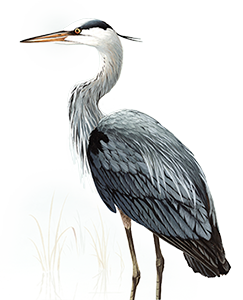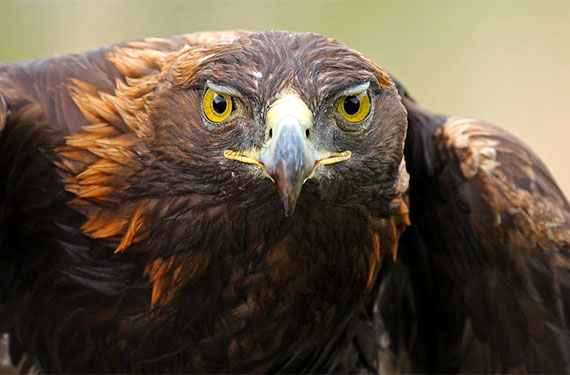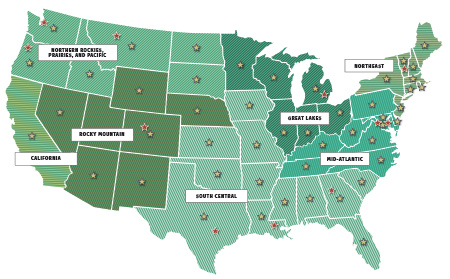Through our Tribal Partnerships Program, the National Wildlife Federation partners with sovereign tribal nations to solve today's conservation challenges for future generations. Our tribal work is headquartered out of the National Wildlife Federation's Rocky Mountain Regional Center, and includes staff on the ground from Montana to Arizona.
We work nationwide with tribes to protect wildlife, advance land stewardship, safeguard water resources, provide environmental education, and combat climate change.
The goal of the Tribal Partnerships Program is to promote environmental and economic justice for Native Americans and to address inequities and resource needs for tribes at the local, state, and national levels.
Protecting and Restoring Wildlife on Tribal Lands
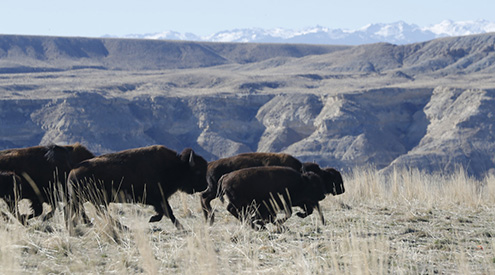
The National Wildlife Federation and our tribal partners work to restore and protect wildlife and preserve key wildlife habitats and corridors. Our work includes:
- Protecting bighorn sheep—The National Wildlife Federation worked closely with the Nez Perce Tribe to advocate for bighorn sheep restoration and conservation that was threatened by disease transmission from domestic sheep grazing in the Payette National Forest in Idaho. As a result, in April 2011, the U.S. Forest Service adopted a science-based approach to maintain separation between bighorn sheep ranges and areas open for domestic sheep. The decision established sorely-needed protection for bighorn sheep, opening the door to a future that includes viable bighorn sheep herds for the use and enjoyment of tribes and all Americans.
- Giving bison room to roam—The National Wildlife Federation partners with tribes to restore wild bison to tribal lands. The National Wildlife Federation and tribes share a common vision—restoring wild bison to their historical habitat and restoring Native Americans’ cultural connections to bison.
- Restoring black-footed ferrets to the American prairie—The National Wildlife Federation works with tribes, including the Cheyenne River Sioux, to bring endangered black-footed ferrets back to their prairie habitat.
- Working with the Cocopah Indian Tribe to protect wildlife habitat along the Colorado River—The National Wildlife Federation partners with the Cocopah Indian Tribe to accomplish the cultural and environmental preservation of the 23-mile Lower Colorado River Limitrophe, including 12 miles within the Cocopah Reservation.
Spreading Awareness and Action for Climate Change Solutions
Because tribes have the longest continual experience with climate, wildlife, land, and natural resources in North America, they have significant credibility and knowledge and play an important role in facing our climate challenges. We partner with tribes and inter-tribal organizations to increase awareness among Native people about climate change and generate active responses to confront it. This work includes:
- Making sure Tribal Nations have a voice in federal climate and energy legislation negotiations, to ensure tribes get the support and resources they need to manage the impacts of climate change on their lands.
- Convening national and regional workshops on climate impacts to tribal resources and adaptation and mitigation solutions, such as renewable energy, energy efficiency and weatherization.
- Supporting on-the-ground renewable energy and energy efficiency projects in order to reduce greenhouse gas emissions, lower utility bills, and create new opportunities for learning and jobs.
Developing Alternatives to Dirty Fuels in the Powder River Basin
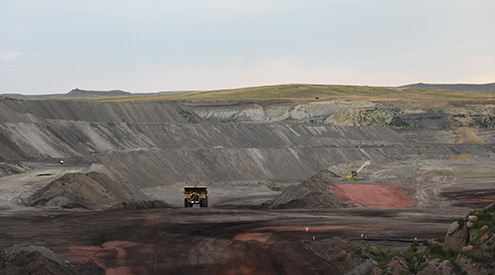
Powder River Basin is the most active area in the country for coal bed methane development, a form of coal mining which requires large amounts of water and draws down the water table. The massive energy development in the region contributes more than 14 percent of the total U.S. climate pollution, disturbs the landscape, pollutes the air and endangers fish and wildlife such as the threatened greater sage-grouse. The National Wildlife Federation works with tribal members from across the Northern Plains who historically, culturally and currently are attached to the Powder River Basin landscape.
We partnered with the Northern Cheyenne Environmental Protection Department to conduct energy efficiency and renewable energy trainings for community members and make tribal buildings more energy efficient.
We are also working partners to create a Carbon Trust which would provide economic incentives for the tribe to keep its coal in the ground and preserve its pristine habitat of grass-covered plains and rolling hills.
We hosted a summit in Billings, Montana, to unite regional landowners and other interested parties in a coalition to protect the Powder River Basin and its wildlife from growing industrialization. More than 150 participants attended the summit, including ranchers, conservationists, elected officials, and representatives from seven Native American tribes. Stakeholders worked on a strategy for drawing national attention to the region and on an action plan to promote responsible energy development.
Providing Environmental Education to Tribal Educators and Students
The National Wildlife Federation's Tribal Lands Education program goal is to empower tribal educators and students to become the next generation of environmental stewards by engaging them in habitat projects and building leadership skills.
We seek to increase Native American students' understanding of science and natural resources through the development and use of the National Wildlife Federation's Schoolyard Habitat® program, as well as other environmental curricula.
We assist educators and community members at tribal schools, libraries, community and youth centers, Boys and Girls clubs, and other venues to adapt these learning systems to fit traditional tribal practices, optimizing environmental, native language, and cultural education opportunities.
We also connect educators and students to the National Wildlife Federation's Eco-Schools US program to help integrate sustainable principles throughout their schools and curriculum, enhance science and academic achievement, and foster a greater sense of environmental stewardship among youth.
Protecting Habitat Along the Colorado River With the Cocopah Indians
The National Wildlife Federation is partnered with the Cocopah Indian Tribe to accomplish the cultural and environmental preservation of the 23-mile Lower Colorado River Limitrophe, including 12 miles within the Cocopah Reservation.
"Limitrophe" means "bordering," and refers to the land alongside America's majestic Colorado River. This particular stretch of land sustains the largest proportion of native cottonwood, willow, and mesquite species on the entire river, providing more than twice as much native habitat than any other stretch of the Lower Colorado River.
More than 120 species of waterfowl, wetland, and neotropical birds use habitats along the Limitrophe riparian corridor for feeding and resting refuge. Migratory birds use this area as a stopover along the Pacific Flyway, connecting their wintering habitats in Mexico and Central America and their breeding grounds in the northern U.S. and Canada.
In addition, the habitat supports threatened and endangered species such as the Yuma clapper rail, Southwestern willow flycatcher, Bell’s Vireo, and yellow-billed cuckoo (under listing consideration).
Restoration and protection of the Limitrophe will help complete a link between protected areas along the Lower Colorado, treating the river as a complete ecosystem rather than as fragmented areas.
For more about the National Wildlife Federation's Tribal Partnerships Program, please contact Garrit Voggesser at Voggesser@nwf.org.

